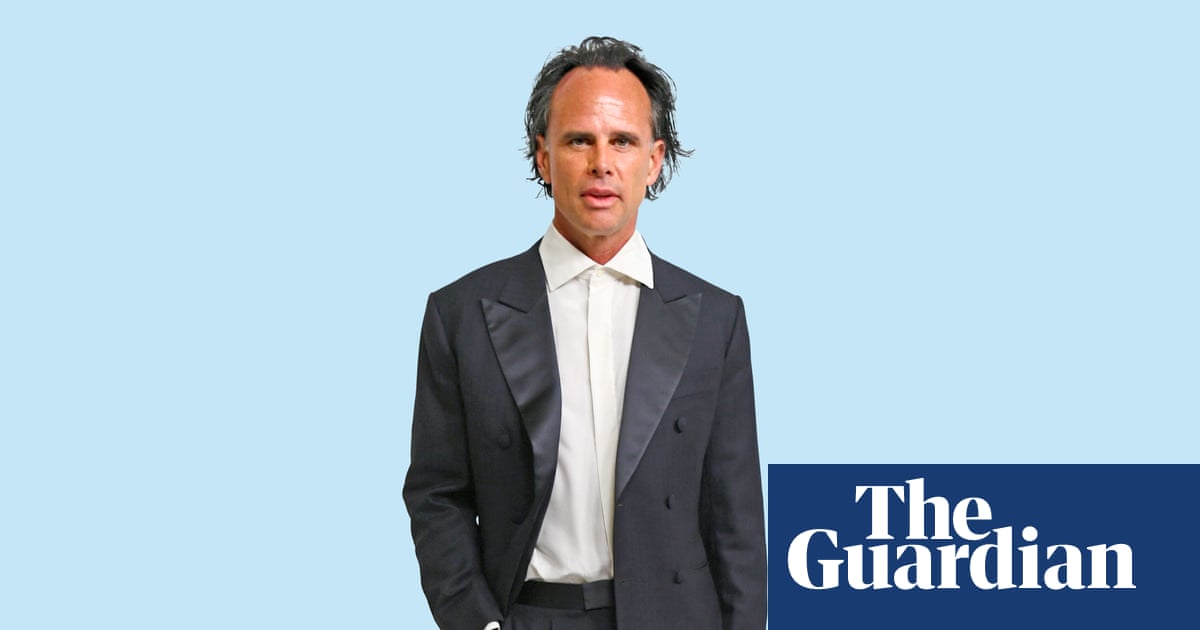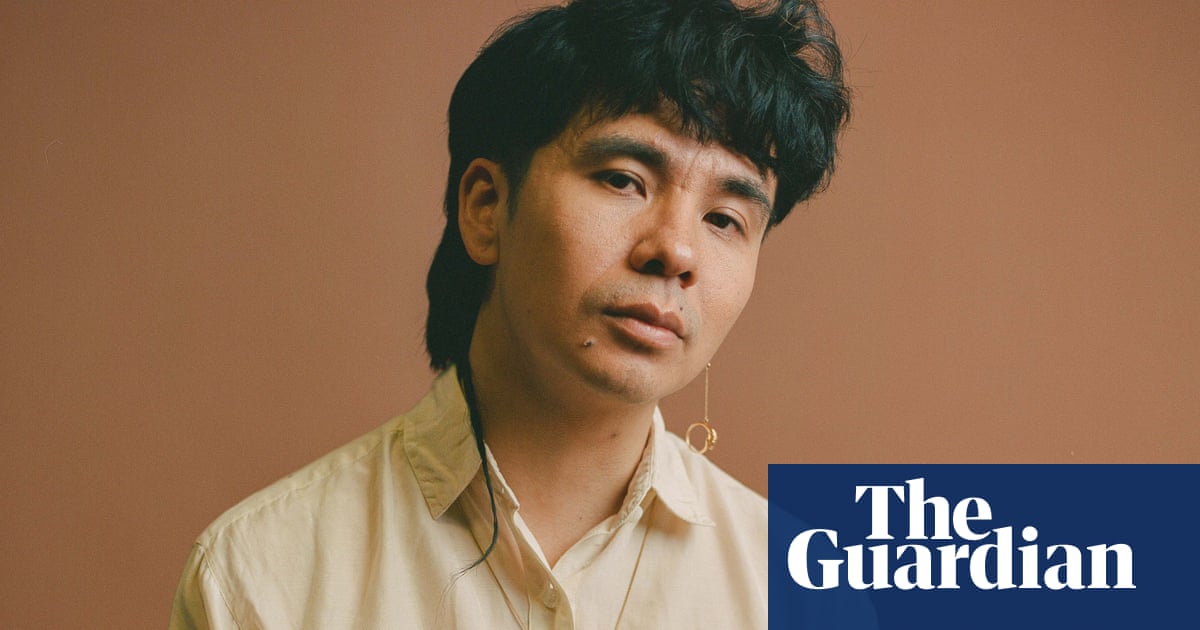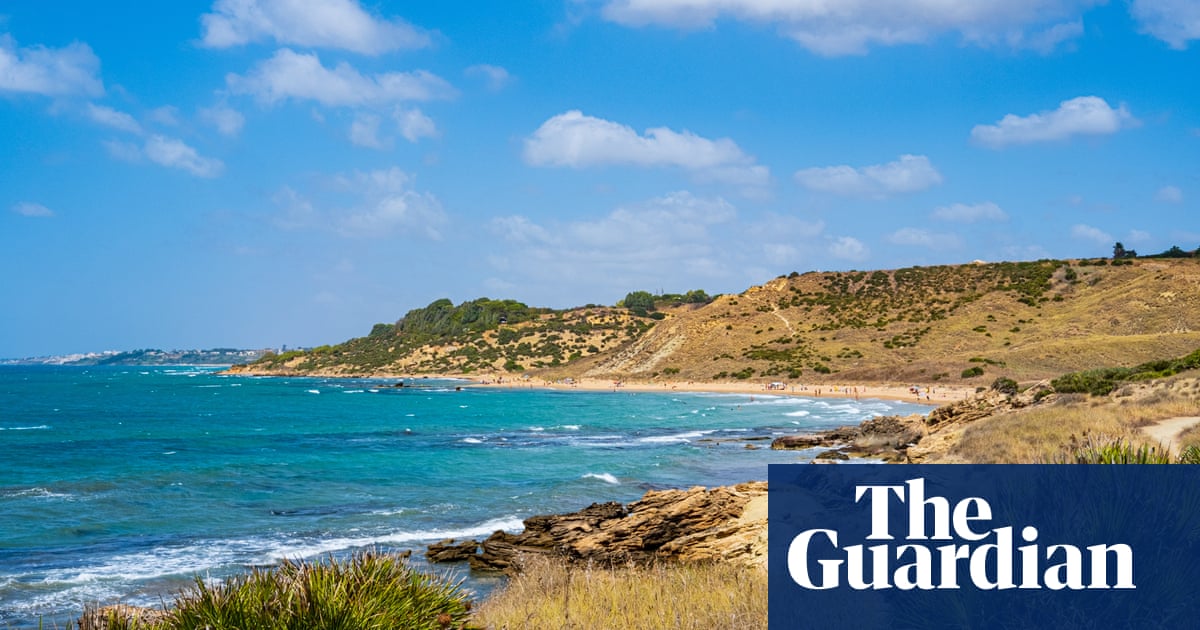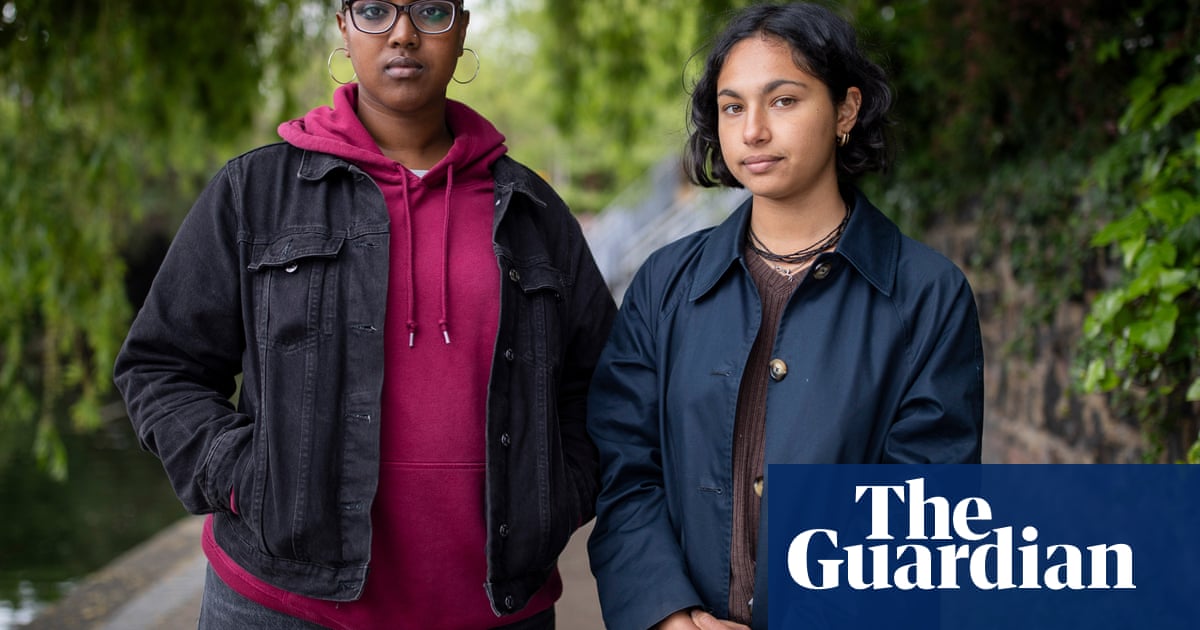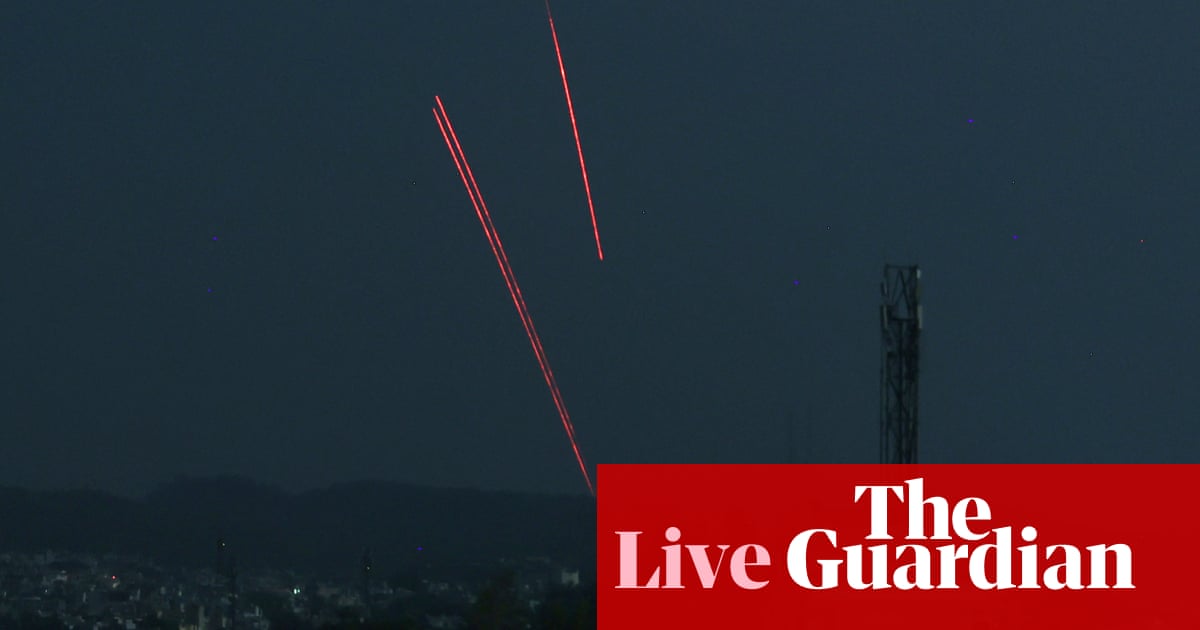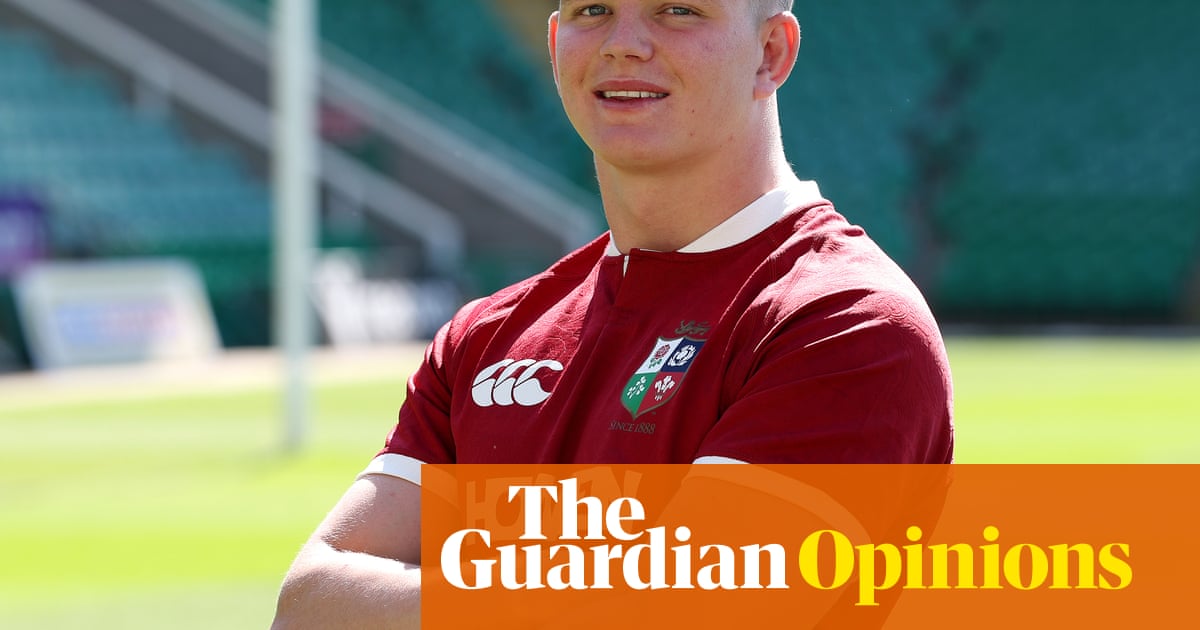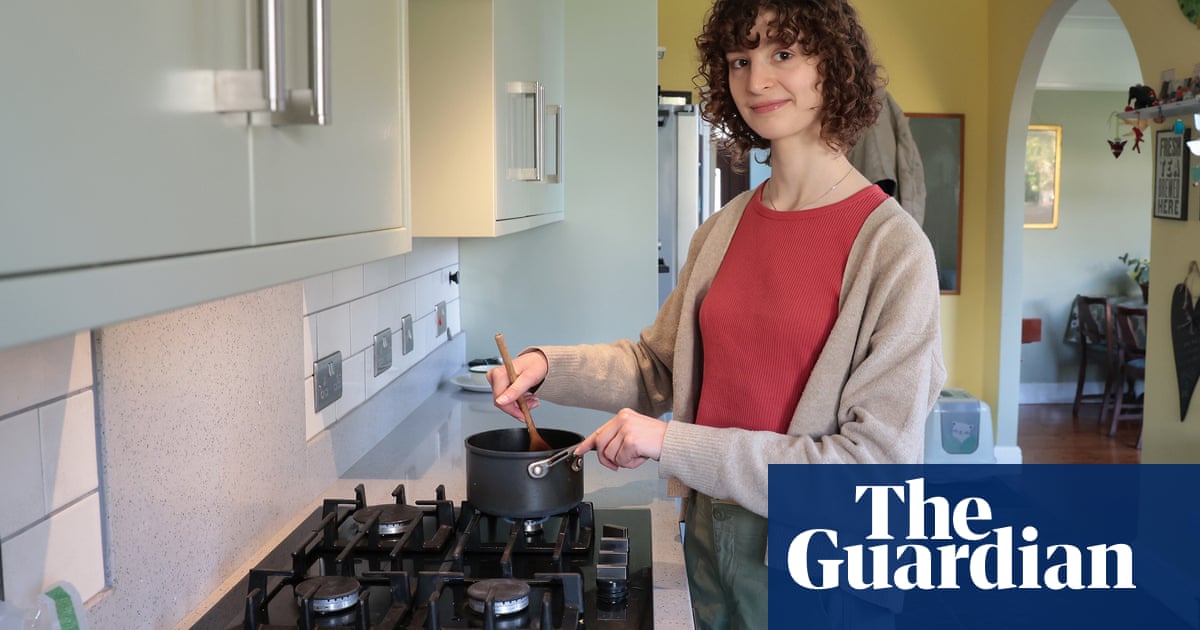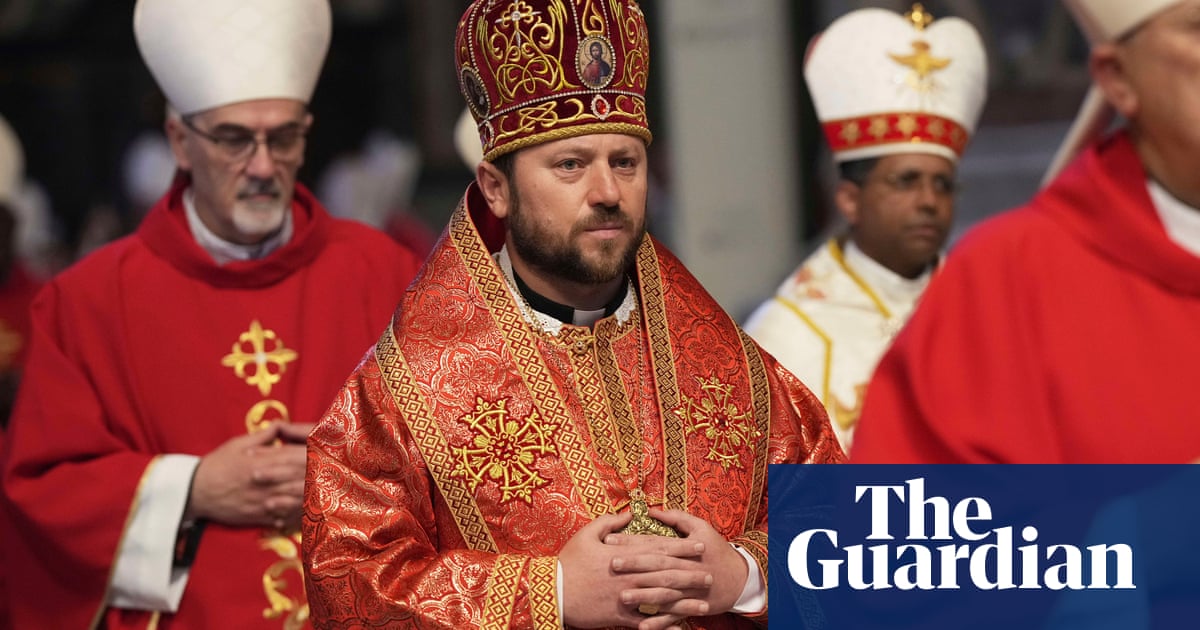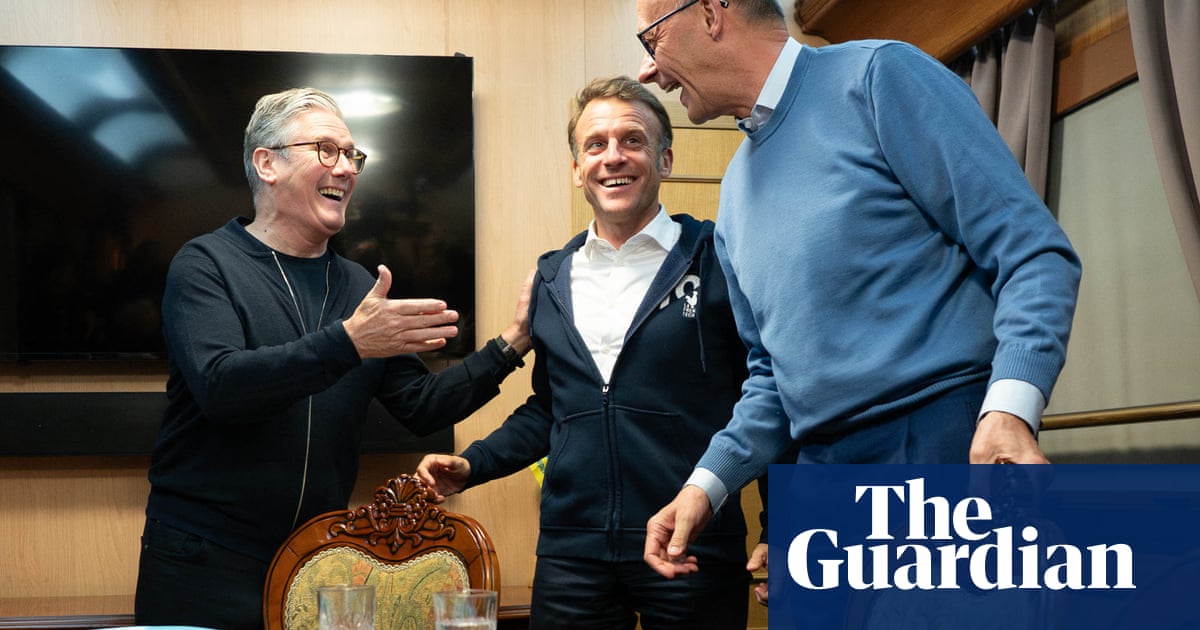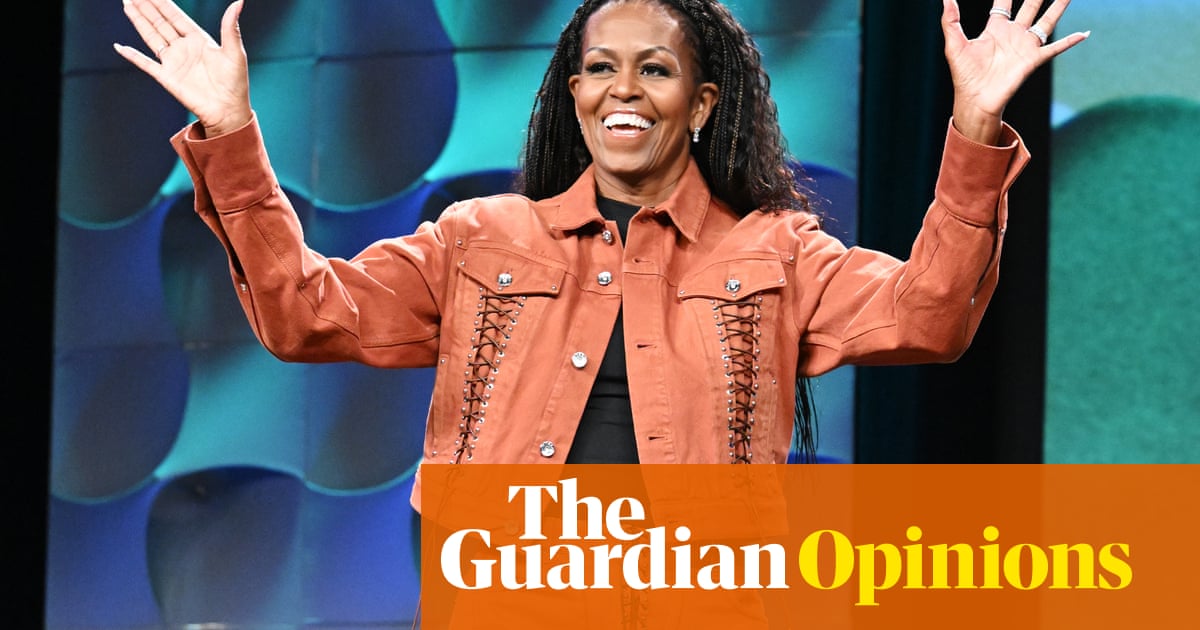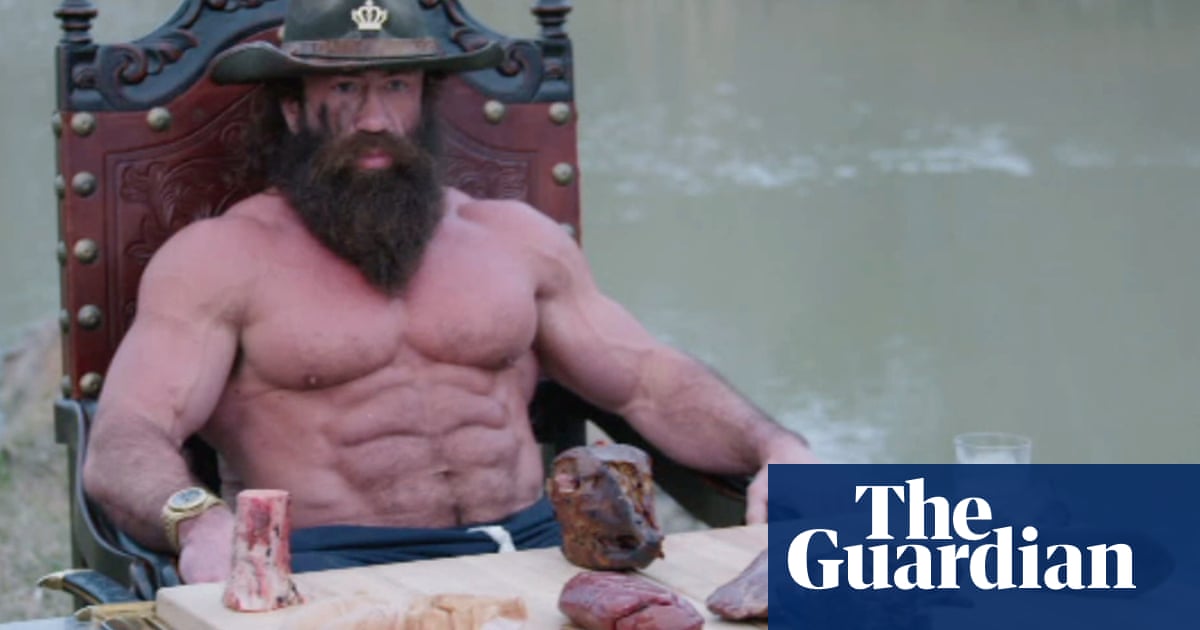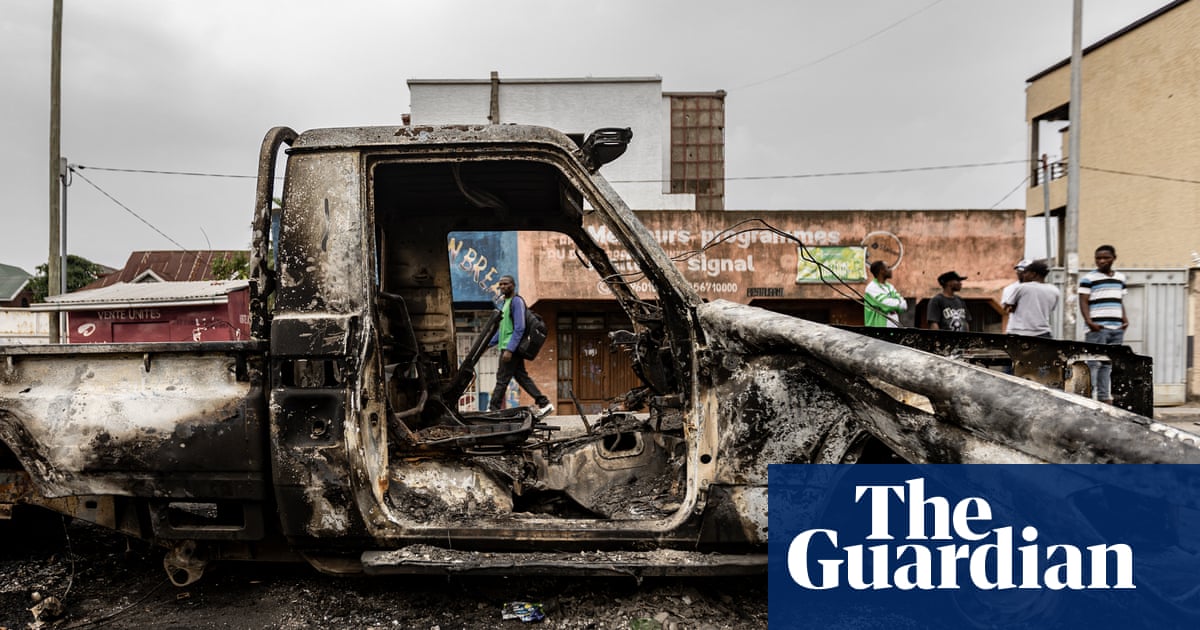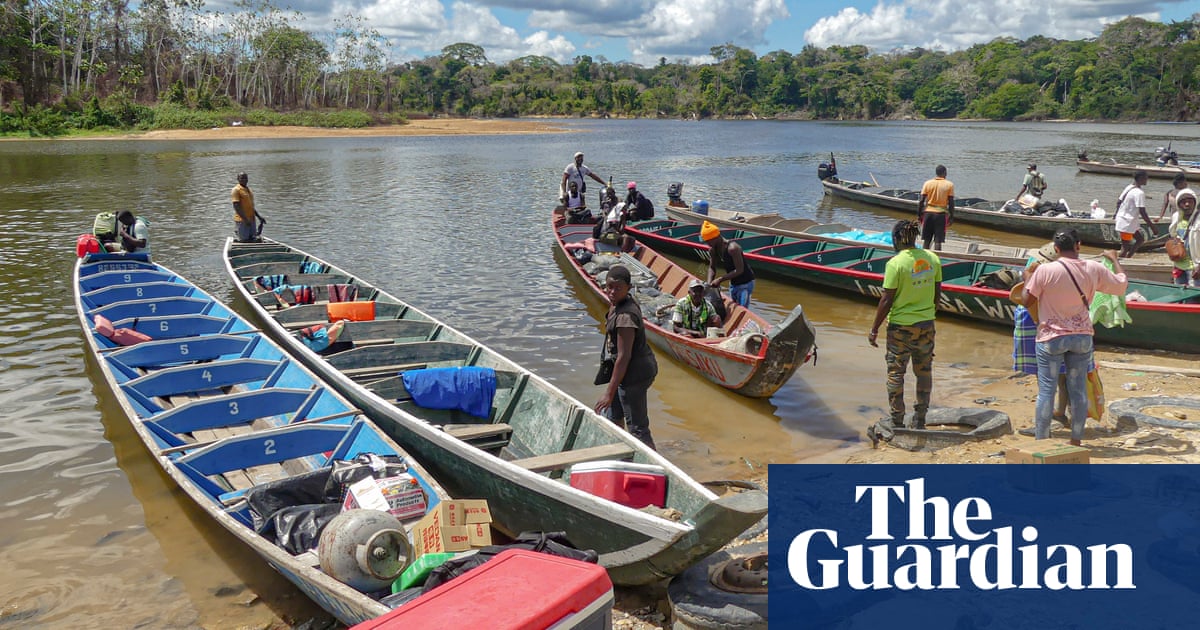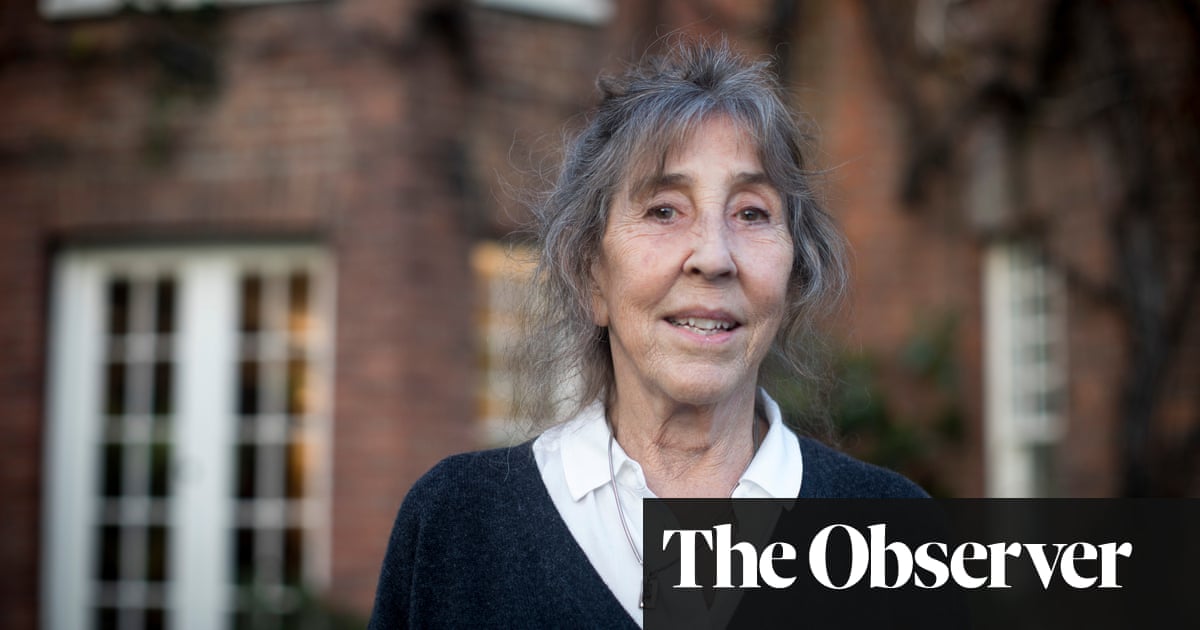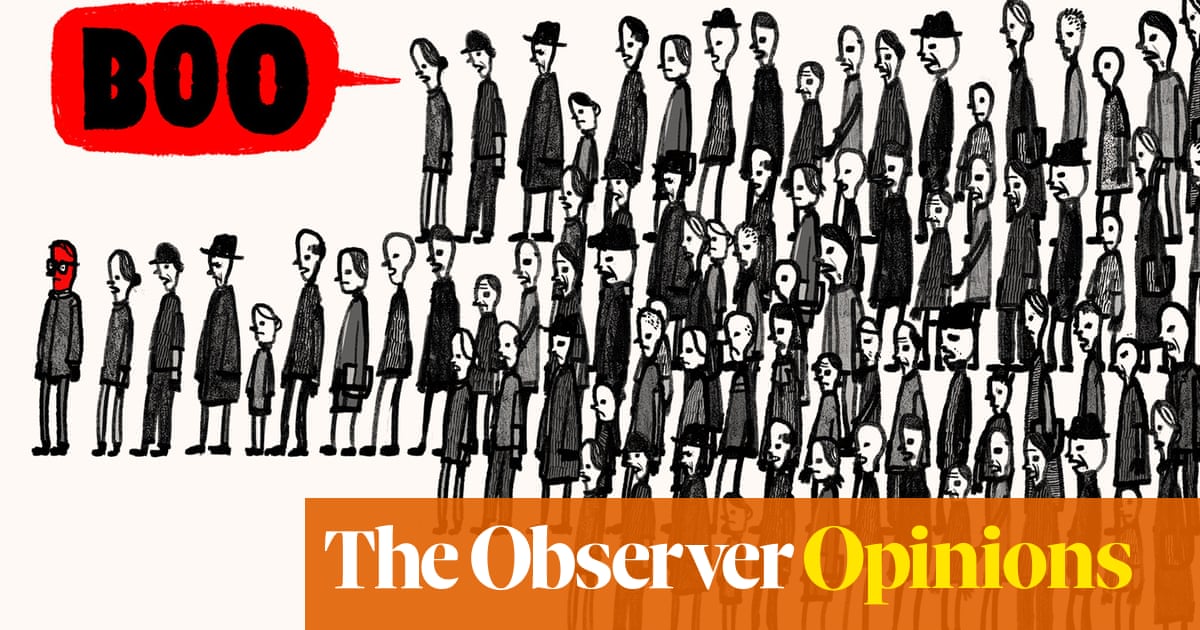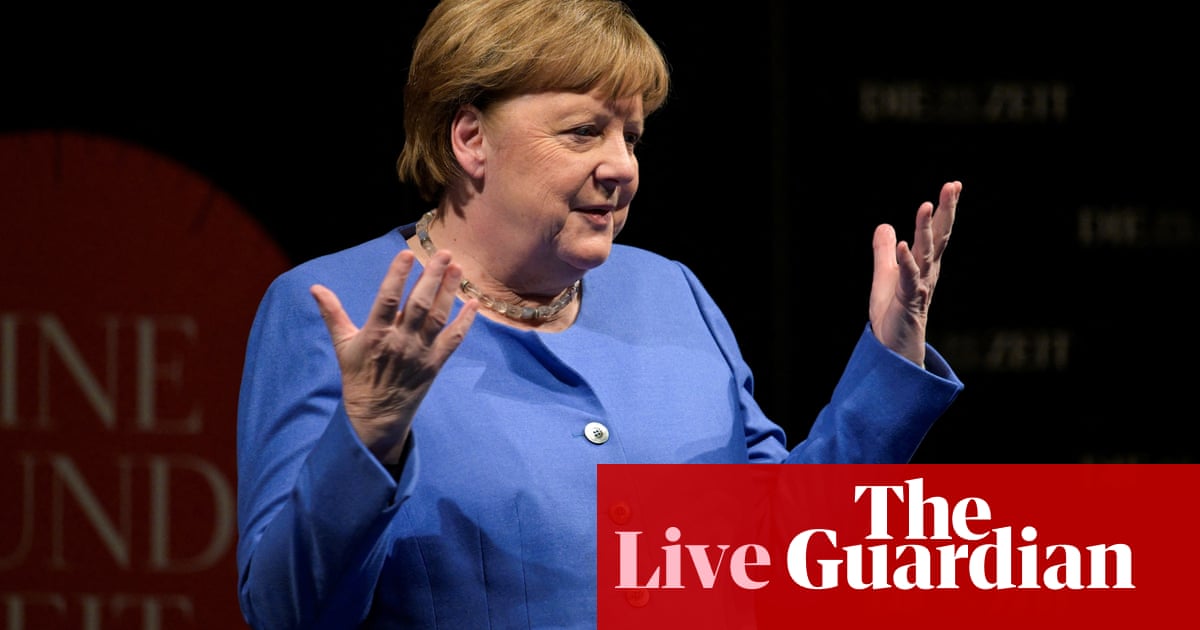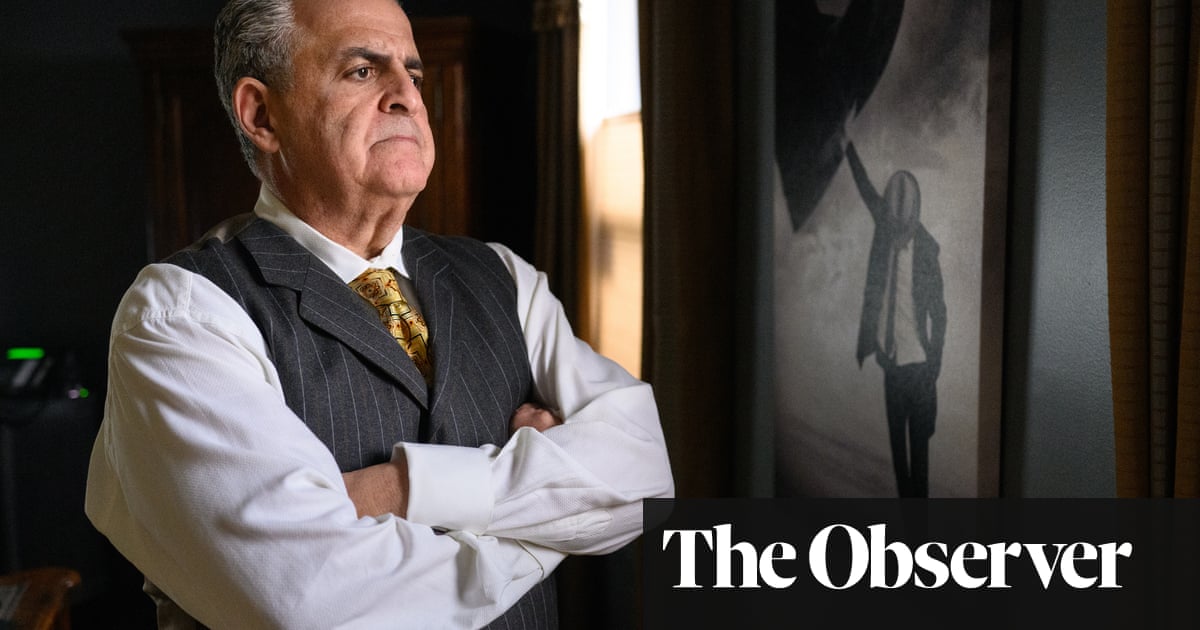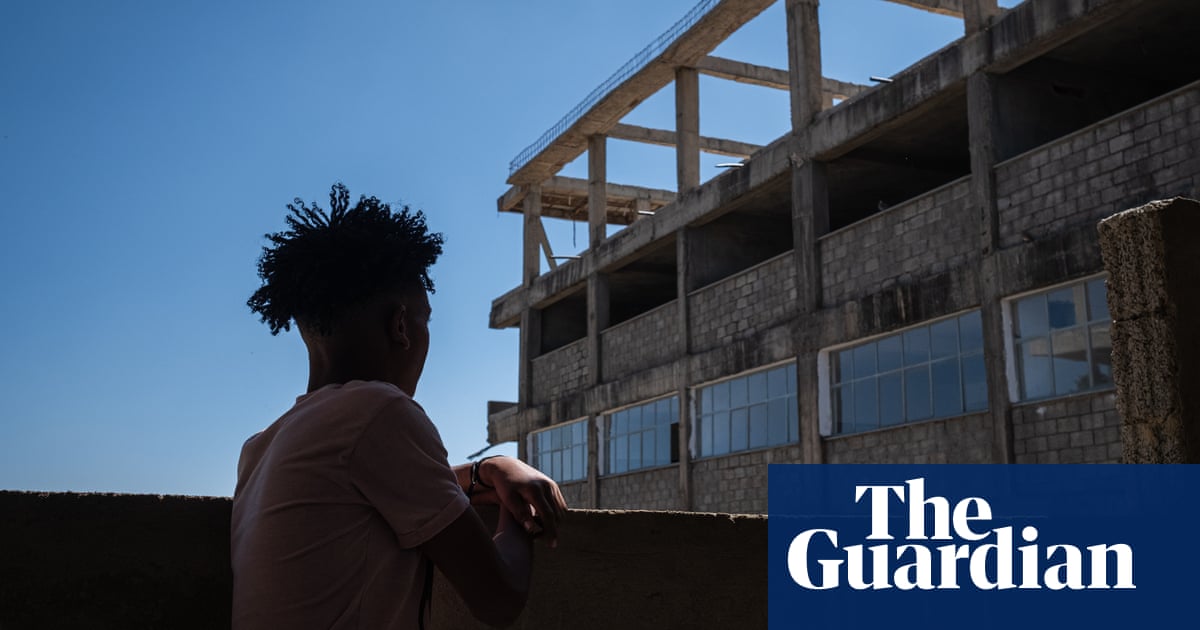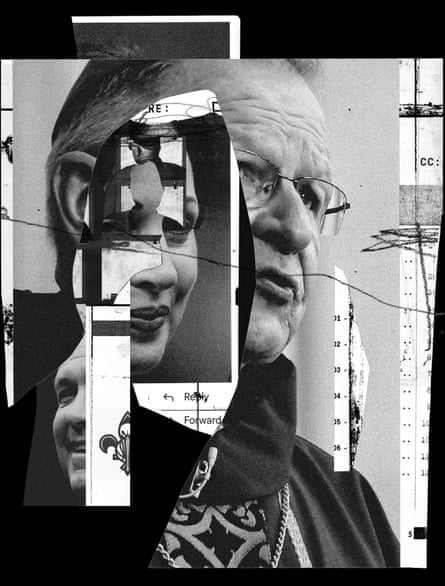
High-level executives with the NFL’s New Orleans Saints football team and the NBA’s Pelicans basketball team had a deeper role than previously known in connection with a list of priests and deacons faced with credible allegations of child molestation while the clergymen worked with their city’s Roman Catholic archdiocese, the Guardian and reporting partner WWL Louisiana can reveal.
According to highly sensitive emails that were obtained by the outlets, one top executive even described a conversation with the New Orleans district attorney at the time that allowed them to remove clergy names from the list – though the clubs deny their official participated in that discussion, and the prosecutor back then vehemently denies he would ever have weighed in on the list’s content.
The emails call into question prior and newly issued statements by New Orleans’ two major professional sports franchises as they denied being overly entwined in the archdiocese’s most damning affairs – while fighting to keep their communications with the church out of public view.
After first seeing the so-called Saints emails in 2019 through a subpoena, abuse survivors’ attorneys alleged that the two franchises’ top officials had a significant hand in trying to minimize what was then a public-relations nightmare for the city’s archdiocese – but has since triggered a full-blown child sex-trafficking investigation aimed at the church by law enforcement.
The initial allegations about the emails led to local and national media investigations, including by Sports Illustrated and the Associated Press, that highlighted a fierce closeness between the sports franchises and the Catholic church in New Orleans.
Perhaps the strongest manifestation of that closeness was New Orleans archbishop Gregory Aymond’s serving as a signing witness on the testamentary will that positioned Gayle Benson to inherit ownership of the Saints and Pelicans from her late billionaire husband, Tom. The will also gave key positions in Tom Benson’s estate to the teams’ president, Dennis Lauscha, and top spokesperson, Greg Bensel.
The Saints’ proximity to the church spurred protests by clergy-abuse survivors in front of the team’s headquarters and at the offices of one of the oldest Catholic archdioceses in the US.
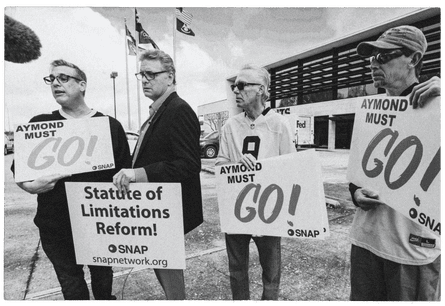
Yet what remained hidden until now are more than 300 emails, amounting to more than 700 pages, many emblazoned with the NFL and NBA logos, showing that the teams’ officials were more involved with some of the church’s operations than they ever admitted. They expose how extensively the sports teams’ leaders intervened in their local church’s most unyielding scandal.
In the most blatant example of that, Bensel – the teams’ vice-president for communications – wrote an email to Lauscha on 1 November 2018, the day before the clergy-abuse list was released. Using common abbreviations for “conference call” and “with”, Bensel wrote: “Had a cc w [New Orleans’ then district attorney] Leon Cannizzaro last night that allowed us to take certain people off the list.”
But the teams said in a 2020 statement: “No one associated with our organizations made recommendations or had input on the individual names of those disclosed on the list.”
On Saturday, the team also said: “No Saints employee had any responsibility for adding or removing any names from that list or any supplemental list. Nor did any Saints employee offer any input, suggestions or opinions as to who should be included or omitted from any such lists. Any suggestion that any Saints employee had any role in removing anyone from the archdiocese’s published lists of credibly-accused clergy is categorically false.”
Meanwhile, when WWL Louisiana and the Associated Press asked him separately in 2020 if he had any input on the contents of the list, Cannizzaro – a self-described pious, practicing Catholic – denied it.
“No,” Cannizzaro told WWL when asked that question. “We simply requested information from them. We requested documents from them, and they provided us documents of people that they believe were responsible for abuse.”
Through an email from a spokesperson, Cannizzaro said to an Associated Press reporter that “he was not consulted about the composition of the archdiocese’s ‘credibly accused’ list nor did he or anyone from [his] office have input into its assembly”.

More recently, the Guardian obtained a typed phone message left for Cannizzaro at his office showing the archdiocese contacted him for comment requesting follow up “on conversation you had with Archbishop Aymond”. The date left on the message was 29 October 2018, four days before Aymond released the clergy-abuse list.
Cannizzaro, for his part, said he isn’t sure he has ever met Bensel and “did not at any time ask the archdiocese or tell the Saints to tell the archdiocese … ‘remove this name from the list’.”
“I would not have done that,” said Cannizzaro, who is now the chief of the criminal cases division at the Louisiana state attorney general’s office. “That’s just not something I would have done.”
Another revelation in the emails: the sports franchises took the initiative to protect Aymond’s flagging reputation in the summer of 2018 without his asking for that, before the archbishop announced plans to release the names of dozens of abusive clergymen.
Bensel sent an email in July of that year to Gayle Benson asking her to let him help Aymond with “crisis communications”. Benson – who counts Aymond as one of her best personal friends – replied to Bensel that same day: “Thank you Greg … I am certain he will appreciate it.”
The pair exchanged those emails the day after a damaging story about a deacon who had repeatedly faced criminal charges of child sexual abuse being allowed to read at masses – triggering one of multiple scandals in 2018 which pressured the church into releasing a list of credibly accused clergymen as a gesture of conciliation and transparency.
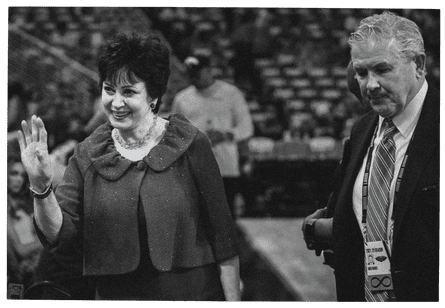
Benson claimed in 2020 that Bensel only got involved in the local church’s messaging after being “asked if he would help the archdiocese prepare for the media relative to the release of clergy names involved in the abuse scandal”.
On Saturday, an attorney for the Saints said Bensel did so in part at the suggestion of New Orleans-based federal judge Jay Zainey, a devout Catholic – who, according to the emails and time stamps from them, would have had to make that entreaty offline before the article on the abusive deacon was published or very shortly thereafter. Zainey has previously publicly acknowledged making such a suggestion, though he declined further comment on Saturday.
The team’s attorneys on Saturday also said “other local civic leaders” asked Bensel to assist the archdiocese, though the lawyers did not say exactly when those requests were made.
On Saturday, as they have done before, the Saints said Bensel’s role was limited to “public relations assistance provided to the archdiocese of New Orleans … in anticipation of press interest in the publication of a list of clergy who were credibly accused of abuse” on 2 November 2018.
Bensel himself at one point wrote in the emails that he was presenting himself “not as the communications person for the Saints/Pelicans but as a parent, New Orleanian and member of the Catholic Church” – as well as a personal friend of Aymond. And the Saints on Saturday emphasized that “no compensation from the archdiocese was expected or received in return for Mr Bensel’s assistance”.
But Bensel communicated directly with local media about their coverage of the clergy-abuse crisis using his Saints.NFL.com email address, bearing a signature line displaying two of the most recognizable logos in sports: the NFL’s shield and the NBA’s silhouette of a dribbling ball player. Lauscha and Benson used their Saints.NFL.com email addresses throughout the communications, too.
And the emails also show Benson, Lauscha and Bensel continued to coordinate with the archdiocese on how to respond to news stories about the clergy-abuse crisis or other topics involving the organizations’ leaders for at least eight more months beyond the list’s release.
On 21 June 2019, Bensel sent an email complaining that he did not “get paid enough” because he had to prepare the archbishop for an upcoming interview with New Orleans’ Advocate newspaper about clergy-abuse lawsuits and their effect on the church’s coffers. The regular email exchanges between team officials and the archdiocese ended only in July 2019, after a subpoena for the communications was issued to the Saints and the NFL by attorneys for clergy-abuse survivors who had detected evidence of them while pressing a lawsuit for damages on behalf of a victim.
With the backing of various allies – including Benson, Zainey and future federal judge Wendy Vitter, then the archdiocese’s general counsel – the Saints and Pelicans officials used their influence to lean heavily on prominent figures in the local media establishment, pushing for them to soften their news coverage of Aymond, the emails show.

Bensel also sought to convince media outlets to limit their scrutiny of a list that turned out to be so incomplete it eventually precipitated a joint federal and state law enforcement investigation into whether the archdiocese spent decades operating a child sex-trafficking ring whose crimes were illegally covered up.
“Casting a critical eye on [Aymond] is neither beneficial nor right,” Bensel wrote in a July 2018 letter to editors at the Times-Picayune and the Advocate, the two daily New Orleans newspapers in existence back then.
A year later, when an Advocate reporter emailed Bensel seeking a comment from the Saints and Pelicans about the subpoena issued to them and their powerful leagues, Bensel quickly forwarded it directly to the owner of that newspaper, John Georges, after unsuccessfully, and sarcastically, suggesting the journalist ask Georges for comment instead.
The Saints’ officials statement on Saturday did not answer questions about Bensel’s remark to the reporter or his overture to Georges.
The statement from the team’s lawyer said “no member of the Saints organization condones or wants to cover up the abuse that occurred in the archdiocese of New Orleans”.
Separately, a statement from the Advocate and the Times-Picayune – which Georges has since acquired – said: “No one gets preferential treatment in our coverage of the news. Over the past six years, we have consistently published in-depth stories highlighting the ongoing serious issues surrounding the archdiocese sex abuse crisis, as well as investigative reports on this matter by WWL [Louisiana] and by the Associated Press.”
Some of those WWL Louisiana reports the newspaper ran were produced in partnership with the Guardian.
The newspapers’ statement said: “As the largest local media company in Louisiana, we often hear from community leaders, and we welcome that engagement, but it does not dilute our journalistic standards or keep us from pursuing the truth.”
A statement from the archdiocese on Saturday echoed the Saints and Cannizzaro in saying “no one from the [team] or the New Orleans district attorney’s office had any role in compiling the [credibly accused] list or had any say in adding or removing anyone from the list”. It also characterized Bensel’s role from 2018 to 2019 as assisting “with media relations”, for which neither he nor the archdiocese were provided compensation.
‘Dark days’
The emails – obtained by the Guardian, WWL Louisiana, the Associated Press and the New York Times – came after Aymond tied his archdiocese to the lucrative sports teams owned by Benson in a way rarely, if ever, seen in the world of sports.
A famously devout Catholic, prominent church donor and philanthropist who recently won an NFL humanitarian award, Benson inherited the Saints and Pelicans after her husband, Tom Benson, died at age 90 in March 2018. He bought the Saints in 1985 and the Pelicans in 2012. He threatened to move the Saints after Hurricane Katrina devastated New Orleans in 2005 but was convinced to stay.
Tom Benson then became a hero and symbol of the city’s recovery from Katrina in 2010, when the Saints won their first – and so far only – Super Bowl title, igniting one of the region’s most ebullient celebrations ever.
In Tom Benson’s final years, his children and grandchildren from a previous marriage squared off with Gayle, his third wife, over who would inherit control of his teams and other businesses. Lauscha and Bensel were widely seen to have aligned themselves with Gayle in a struggle that she won. And the succession plan that Tom Benson settled on in her benefit was laid out in a will.
It left Gayle Benson in control of the sports teams and made Lauscha executor of Tom’s estate. And in the event Lauscha ever became unwilling or unable to fulfill his duties, they essentially would be split among two others of those most trusted by the Bensons: longtime Saints general manager Mickey Loomis – and Bensel.
One of two witnesses to sign that will was Aymond.
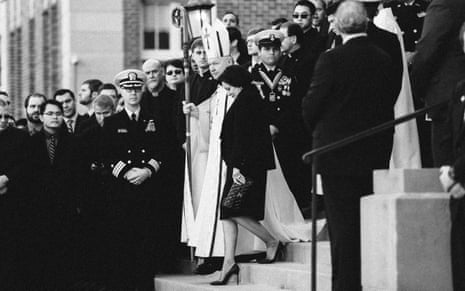
And four months after the will took effect upon Benson’s death, a newspaper article about a local deacon and alleged serial child molester thrust Aymond into the center of the global Catholic church’s clergy-abuse scandal.
Published by the Advocate, the article questioned how the deacon, George Brignac, had been allowed to keep reading scripture at masses despite his removal from public ministry 20 years earlier. Church officials had removed Brignac from ministry in 1988 after he’d been arrested multiple times on child molestation charges. The article also reported that the archdiocese had paid $550,000 to settle civil legal claims with a survivor of Brignac’s abuse who would later pursue a criminal case against him, though the clergyman would die before he could face trial.
Subsequent reporting by WWL Louisiana and an Advocate journalist now at the Guardian found that the church had quietly paid at least 15 other victims of Brignac a total of roughly $3m to settle their civil damages over their abuse at the deacon’s hands. Those payments were among nearly $12m in abuse-related settlements that the archdiocese doled out during a 10-year period beginning in 2010.
Aymond immediately faced public backlash, with critics saying he had failed to live up to the promises of zero tolerance for clerical child molesters made by bishops across the US after a clergy-abuse and cover-up scandal had enveloped Boston’s Catholic archdiocese in 2002. He sought to limit the fallout by claiming that he was unaware that subordinates of his had brought Brignac back into a role that he insisted was largely inconsequential.
But later investigations by the Associated Press, WWL Louisiana and the Advocate showed Brignac had also been cleared to meet with – and present lessons to – children at a church school.
The Brignac revelations, however, were not the last of Aymond and the church’s problems. A grand jury report issued in Pennsylvania in August 2018 established that Catholic clergy abuse in that state had been more widespread than the public ever previously realized. Cardinal Theodore McCarrick – a former archbishop of Washington DC – resigned amid allegations of child molestation as well as other sexual abuse, though he would later be deemed incompetent to stand trial due to dementia.
And, in September 2018, the Advocate published a bombshell article about clergy abuse which implicated New Orleans’ Jesuit high school, the revered Catholic college preparatory from which both Lauscha and Bensel graduated.
The article outlined how the high school quietly paid settlements to people who claimed that priests or other school employees sexually abused them as children. The school faced some of the same criticisms lobbed at Aymond after Brignac’s exposure. Jesuit high school’s leader at the time defended the institution by condemning the cases in question as a “disgusting” chapter in the school’s history – but one that was left far in its past.
Bensel later wrote in an email to the school’s president that he was on Benson’s boat with Aymond when the story about Brignac came out – and the archbishop “was very troubled”.
“These are dark days,” Bensel continued.
The day after the Brignac story broke, Bensel wrote to Benson: “The issues that the Archbishop has to deal with that never involve him,” on top of a link to – and an attached copy of – the Advocate article about the molester deacon authored by a reporter now at the Associated Press.
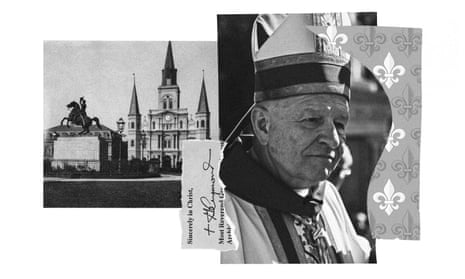
Benson wrote back suggesting that she had seen the article already. She said she had even spoken to Aymond about it “last week”, several days before its publication. “Archbishop is very upset,” Benson told Bensel. “A mess.”
Bensel told Benson he was available to Aymond if the archbishop “ever wants to chat crisis communications”.
“We have been through enough at [the] Saints to be a help or sounding board,” Bensel said, about six years after he guided the team through the infamous so-called Bountygate scandal that – among other consequences – resulted in the club’s coach at the time being suspended for an entire season. “But I don’t want to overstep!”
Benson replied: “Thank you Greg, I will pass this on to him. I am certain he will appreciate it. Many thanks.”
An August 2018 email that Benson sent to the Saints’ governmental liaison made clear how bad she felt for Aymond after the Brignac revelations. “Very sad he is going through this,” Benson wrote while sharing a separate letter by Aymond apologizing “for any wrongdoing by the church or its leadership”. The archbishop had issued the attached missive to a local chapter of a Catholic group called the Equestrian Order of the Holy Sepulchre of Jerusalem, which traces its origins to the First Crusade in the 11th century.
Though Jesuit high school’s president back then, Christopher Fronk, later told a Sports Illustrated reporter now at the New York Times, “I never heard from the Saints on this issue” of church abuse, the emails show that he, too, was contacted by Bensel – just two days after his campus community was rocked by the September 2018 Advocate clergy molestation article.
“Speaking from personal experience after 23 years with the Saints, when the media and the public attack you at your core, it takes the resolve and focus of people like yourself to lead us to clarity,” Bensel wrote. “The church needs leaders like you and I just wanted to reach out and say you have the support of myself, Dennis and Mrs Benson.
“If I can offer any counsel on any issue, I am here for you.”
Fronk, who left Jesuit high school in early 2020, replied: “Thanks for your email. I appreciate it. The last couple of days have been long, and I have more ahead of me. I am relying on prayers and support from others. And I may be taking you up on your wise counsel.”
‘Work with him’
Most of the Saints’ communications about clergy abuse focused on Aymond’s handling of the issue. And the strategy that the archbishop ultimately settled on was one implemented in other US dioceses. He would release a list of priests and deacons who served in New Orleans over the years and had been the subject of credible child molestation accusations.
Aymond later told WWL Louisiana that he had contemplated such a maneuver a year before deciding to do so. And he claimed he would have reached that decision without the various local and national scandals consuming the Catholic church at the time, though he acknowledged they created pressure for him to act.
Whatever the case, Bensel recommended “transparency” – a wholehearted effort to come clean about the past abuses and apologize for them. And with the list’s release being announced weeks ahead of time, the church would come to count on Bensel to get local media outlets to focus more on hailing Aymond for taking such a courageous step rather than analyzing the roster’s thoroughness.
The campaign to set the media’s agenda began in earnest on 17 October 2018, when Bensel wrote to higher-ups at the Advocate as well as the Times-Picayune. He revealed to them that he had been “confidentially discussing the recent horrible issues that [Aymond] and the church are facing”. He also referred to chatting offline with the Advocate and Times-Picayune brass earlier that morning.

In his email to the newspapers, Bensel disclosed Aymond’s plan to out clergymen who “sadly betrayed their role and authority to minister to our children, the elderly and the sick”. And, though he anticipated the gesture would not “simply end all of the past and current suffering and questions”, he wrote that he had an urgent request for the outlets.
“I am asking that YOU as the most influential newspaper in our state, please get behind him and work with him,” Bensel said, in part. “We need to tell the story of how this Archbishop is leading us out of this mess. Casting a critical eye on him is neither beneficial nor right.”
He said the news media had helped the Saints maintain their footing in the NFL despite being in one of the league’s smallest markets. And he promised that Aymond would have an open-door policy, saying he is “accountable, available and wants to [e]ffect positive change”.
“We need your support moving forward as we go through this soon-to-be messy time as we work toward much, much brighter days ahead,” Bensel said. “Help us tell this story.”
The archbishop would later abandon that open-door policy. For years, Aymond has consistently declined interview requests from reporters at WWL Louisiana and the Guardian who have questioned his handling of the clergy-abuse crisis. He used the word “Satan” when referring to one of those journalists, the former Advocate staff member, in a text message to a third party that was obtained by the writer.
Bensel provided copies of the letters to the newspapers to Benson and Zainey, a sitting, locally based federal judge. The judge – a Jesuit high school alum who has served on the governing board of the New Orleans archdiocese-run college that educates prospective priests – replied: “Thanks very much Greg. You have hit all the points. By his example and leadership, Archbishop Aymond, our shepherd, will continue to lead our church in the right direction – helping us to learn and to rebuild from the mistakes of the past.”
Benson, too, praised Bensel’s tone: “Great letter Greg … spot on! Thank you very much.”
While it’s not clear when the paper first planned it, that same day the Times-Picayune published a column about the upcoming clergy-abuser list headlined: “Archbishop Aymond is doing the right thing.”
A day later, Bensel wrote to the columnist, saying: “very good column on Archbishop Aymond”.
Bensel then sent the column – along with the comments left under it by online users – to recipients including Aymond, Vitter (then still the archdiocese’s attorney) and Zainey. He said the comments – including one questioning “how come the church gets to decide who is ‘credibly accused’ and who is not” – were a valuable insight into the public’s psyche. And Bensel urged them not to “delve or hang on to the negative ones, [but] learn from them”.

The emails show how Bensel dedicated some of the following days to preparing Aymond for a meeting with editors of the Advocate, even while he was in Baltimore for a Saints game.
“Praying for the Saints victory. Very grateful for your help,” Aymond wrote to Bensel at the time.
Referring to the Advocate, Bensel urged Aymond to remember “they need you and you need them”. He said the goal of the gathering with the newspaper’s leadership should be to foster “a better relationship” and drive home how the church is providing “the best measures for a safe environment for our children”.
Bensel suggested that the archbishop “not mention … that the general perception is that the ADVOCATE IS UNFAIR to the Archdiocese of New Orleans”. He also promised to “make time” to converse with Aymond about his advice despite being in and out of meetings.
“POSITIVE POSITIVE POSITIVE,” Bensel wrote to Aymond. “INCLUSIVE ACCESSIBILITY ACCOUNTABILITY MOVING FORWARD.”
Benson, Zainey and Vitter – who is married to a former Republican US senator and had already been nominated to a federal judgeship by President Donald Trump in 2018 and was confirmed to the post the following year – were among those sent copies of correspondence about that meeting. “Excellent!” Benson remarked. “Many thanks!”
Zainey, who later publicly said he could not be sure whether he had ever been sent copies of any of the Saints emails, replied: “Thanks for the wonderful advice. The Arch[bishop]’s sincerity will open their minds and hearts.”
(Zainey later recused himself from any rulings directly involving the archdiocese. But then he went on to rule in a case involving a Catholic religious order that a 2021 Louisiana law enabling clergy-abuse survivors to seek damages over decades-old child molestation was unconstitutional. The state supreme court subsequently upheld the law’s constitutionality, effectively negating Zainey’s ruling.)
After Aymond’s conversation with the newspaper, and after checking in with “a few folks” at the outlet, Bensel emailed Vitter, Aymond and the archdiocese’s in-house spokesperson, Sarah McDonald, saying that “the Advocate editorial meeting was fruitful, positive and I believe will have a lasting impact”. He said: “Great job by you all.”
Yet Aymond would soon become incensed with the Advocate, which late that October published a roster of 16 clergymen who seemed to fit the criteria of the archbishop’s upcoming list based on publicly available news stories and court documents.
Aymond wrote that the piece caught him off-guard, and he was particularly upset with how the newspaper’s website had asked clergy-abuse victims to contact the outlet to tell their stories rather than direct them to the archdiocese “to allow a proper investigation”.
“I want to work with you, but we must both be transparent,” Aymond said. “Will people believe we are working together?”
Upon being provided a copy of Aymond’s missive to the newspaper, Bensel quickly replied: “This is a GREAT response.”
Emails show that the newspaper replied by saying it contacted McDonald prior to the publication of the report. The Advocate said it didn’t believe its editors’ earlier conversation with Aymond prevented it “from continuing … reporting”.
Nonetheless, the Advocate informed Aymond that it had taken offline the request for victims to contact the newspaper, saying it was a “last minute addition” by a digital editor.
Bensel later wrote to Aymond: “An excellent response from them.”
‘Allowed us to take certain people off the list’
The emails show that – 10 days before the documents were released – Aymond provided Bensel an early draft of a letter that the archbishop issued to churchgoers alongside his clergy-abuser list. Bensel replied with suggested changes in handwriting.
A notable one: The draft had made it a point to say most of the accusations involved in the list “go back 30, 40, 50 or more years”. Bensel suggested stronger language, asserting that those accusations went back “decades – 30, 40, 50 and even 70 years ago”.
The final letter evidently adopted that suggestion, reading: “Most of the accusations are from incidents that occurred decades ago, even as long as 70 years ago.”
At last, Aymond’s clergy-abuser list came out the day after Catholics observed the Feast of All Saints and New Orleans’ NFL team celebrated the 52nd anniversary of its founding.
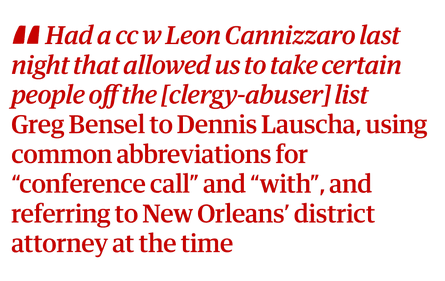
The list – initially containing 57 names – was provided to media outlets that morning under an embargo, which prevents organizations from publishing information that was supplied to them prior to a specific time. And about three hours before that embargo expired, Lauscha emailed Bensel and asked: “Do you see any shockers on the list? Did your SJ you discussed yesterday make the list? The former Loyola president is the biggest shock to me.”
Bensel’s quick reply did not address to whom “SJ” refers, though the letters are the initials of the Jesuit religious order’s formal name, the Society of Jesus. It also doesn’t comment on Bernard Knoth, a former president of the Jesuits’ Loyola University New Orleans, who was included on the clergy-abuser list.
The Saints attorney’s statement on Saturday said Lauscha was referring to a clergyman “rumored to have been accused of abuse [and] was expected to be on the list”.
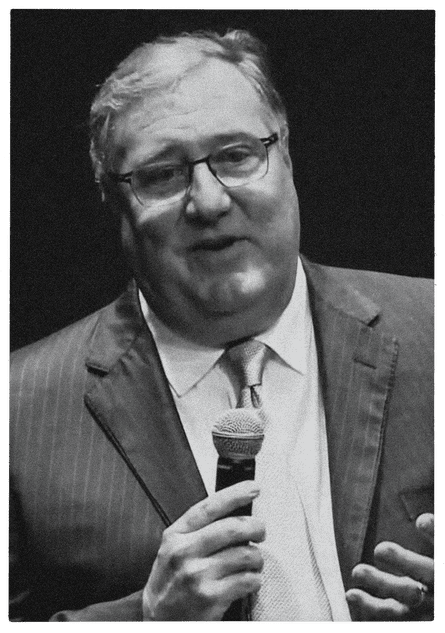
“It is Mr Lauscha’s understanding that the clergyman to whom he referred in his query to Mr Bensel was included on the list on a supplemental list,” the statement said.
Regardless, back in early November 2018, Bensel’s reply read: “Had a cc w Leon Cannizzaro last night that allowed us to take certain people off the list.
“This list will get updated, and that is our message that we will not stop here today.”
The Guardian asked Cannizzaro about a 29 October 2018 typed message informing him of a call from Vitter. Vitter was “following up on conversation you had with Archbishop Aymond”, said the message left for Cannizzaro just four days before the list’s release.
“If I was in a conversation with him, I would’ve been looking for any records he would have had relative to complaints made against priests so we could reach out to those victims to see if there was a prosecutable case,” Cannizzaro said.
Meanwhile, Cannizzaro has denied a conversation with Bensel or any of his colleagues ever took place, including recently when he said in an interview: “I was not on any conference call with anybody from the Saints about this.
“I do not ever remember having a conversation with the Saints about any case going on with our office” at that specific time.
The Saints lawyer’s statement on Saturday also said that no one from the team spoke with Cannizzaro. Instead, Bensel’s email to Lauscha referred “to a conversation that he was told had occurred between a member of the staff of the archdiocese and … Cannizzaro, concerning the list”.
“Mr Bensel has no firsthand knowledge of what was said by anyone during the conversation or in any communication between the archdiocese and the district attorney’s office,” said the Saints lawyer’s statement. “The … email refers to Mr Bensel’s understanding that the list would be updated by the archdiocese.
“It was also Mr Bensel’s understanding that one purpose the archdiocese had in consulting with [Cannizzaro’s] office was to determine whether disclosure of any member of the clergy under consideration for inclusion on the list would interfere with a criminal investigation. Neither Mr Bensel nor any member of the Saints organization was involved in the determinations made by the archdiocese.”
‘A strong and faithful message’
On the day of the list’s release, McDonald had also asked Bensel to join Aymond as the archbishop gave interviews to local media outlets that they could not publish prior to the expiration of the embargo imposed on the document. “The archbishop would appreciate you being there for the Advocate especially,” McDonald wrote to Bensel.
“I have blocked out the entire morning,” Bensel replied. “I will see you there.”
In advance of those embargoed interviews, Lauscha sent Bensel 13 tough questions that Aymond should be prepared to answer. Lauscha suggested deflecting if asked about the number of listed credibly accused clergymen by answering, “One abuse is too many.”
“Excellent,” Bensel replied to Lauscha, before forwarding the questions to McDonald as well as Vitter.
The Saints’ statement on Saturday said: “The questions that Mr Lauscha suggested were intended to encourage openness and transparency.”
Bensel attended the Advocate’s and WWL Louisiana’s separate embargoed interviews with Aymond. In the conversation with the Advocate, Aymond did remark: “One incident is too many.”
Bensel remained silent during the interviews with both outlets. However, at some point later that morning, he emailed a Saints employee who had previously worked for the publisher of the Advocate.
“I want [the Advocate publisher] to write a positive opinion about how this archbishop has handled the transparency of releasing these names and his diligence in making this right,” Bensel wrote to the Saints employee. “Will call to discuss.”
There is no indication in the emails that the conversation Bensel sought took place. But the Advocate did publish an opinion column concluding with the words: “Transparency about grave wrongdoing, however painful, is the best way to help victims, serve parishioners, and support the work of the many church clerics who have brought joy, rather than suffering, to the people they promised to serve.”

Bensel also wrote to the Times-Picayune’s opinion editor, saying: “Today the Archbishop met face to face with all of the media – he sent a strong and faithful message!
“I hope the Picayune would show him – the man – some support in an editorial – our community listens and values [what] you all have to say!!”
The Times-Picayune’s next couple of print editions did not contain such an editorial. But as part of its news coverage about the list, the newspaper did publish a letter in its entirety by Christopher Fronk, Jesuit high school’s then president, that expressed support for Aymond’s release of the document, which contained the names of several abusive priests who had worked at Jesuit high school. Fronk’s letter hailed the disclosure as having been carried out in “a spirit of reconciliation and transparency”.
Once the list’s embargo expired, Aymond granted his only live, on-air interview that day to radio talkshow host Newell Normand, a former sheriff of a suburban New Orleans area – at Bensel’s urging.
Normand’s employer, WWL Radio, has long held the exclusive rights to the Saints’ local broadcasts. And Bensel brokered the conversation between Normand and Aymond through emails involving the director of the radio station, which – despite its call letters – is not affiliated with WWL Louisiana, the TV channel.
McDonald, the archdiocese spokesperson, sent Bensel eight questions to “share with Newell to cover” two days before the interview. Bensel replied to McDonald, copied Normand as well as the host’s station director, and told the radio outlet’s employees: “These questions are a great framework for Newell.”
“Love my Di,” Bensel wrote to the station director, referring to her by a nickname, after the organizations all agreed to the interview. She responded: “Love you too, GB.”
Normand later asked Aymond at least four of the eight proposed questions in a fashion that was substantially similar – though not necessarily verbatim – to what the church suggested. The rest, Aymond answered unprompted.
The suggested questions covered how law enforcement had been provided with a copy of the list; what emotions Aymond was experiencing that day; how the roster “is accurate” but may expand; and that adequate measures were in place for the archdiocese to protect children. Aymond said on the program that the number of priests on the list was relatively small given how many clergymen there had been in the archdiocese over the years, but that even that low tally was too much.
As an example of the talking points, Aymond’s spokesperson suggested that Normand ask her boss, “What has this process been like for you?” After Bensel passed the questions along, Normand asked the archbishop, “I know your heart is broken over this – in going through this. How has this process been for you?”
The suggestions from the church included: “There were earlier media reports that said the list may not be complete, but this is an extensive list going back very far. It seems comprehensive. (ask for response).”
Normand didn’t ask Aymond that on the air. But according to a transcript, after the interview ended, the host remarked, “I know some folks say that they already believe that there are some names that have not been revealed yet, and [Aymond] has said that that is actually a possibility.”
Normand, who has repeatedly criticized the church’s handling of the abuse crisis on air, did raise several issues with the archbishop that weren’t outlined by the archdiocese through Bensel. For example, he asked Aymond why the church didn’t inform law enforcement about allegations of abuse earlier. He also raised concerns about priests harassing other clergy. And he spoke about his own journey as a Catholic to accept that child molestation by priests was rampant.
A statement on Saturday from the corporation that owns WWL Radio, Audacy, said: “WWL stands by its coverage of this story. We have no additional comment.”
‘I don’t get paid enough’
The volume of communications between the Saints and the church lessened after the release of the list, according to the emails. But the two sides still stayed in close contact for many more months.
Between February and March of 2019, mere weeks after the Saints nearly clinched what would have been a second Super Bowl berth, the organizations communicated about a request from Aymond for Benson to submit to the Advocate a flattering letter to the editor. The letter’s purpose was to exalt the archdiocese and charitable programs it has led or participated in.

For help on crafting the letter, the emails show that Bensel brought in some of the Saints’ media relations staffers who ordinarily facilitate sports journalists’ interviews with the team’s players and coaches. (One successfully suggested naming three Saints players who have been first-team All-Pro selections while touting their and Benson’s work with certain social or charitable programs, including an archdiocese-affiliated food bank to which she donated $3.5m in 2019.)
Bensel gave the archdiocese the opportunity to review a draft of what he called “a very robust letter of support from Mrs Benson”, saying: “Make as many edits as you see fit.”
He eventually distributed what he said Benson’s teams “came up with in conjunction with the archdiocese” among the Saints’ general counsel, their governmental liaison and Lauscha, according to the emails.
“Do any of you see an issue with this???” Bensel wrote.
General counsel Vicky Neumeyer replied: “I have to chime in that I don’t really like it. I don’t want [Benson] to appear to be a puppet for the archdiocese because we have way too many constituents from all walks of life.”
Bensel wrote back to Neumeyer that he would come chat with her. She later sent an email saying she spoke with Lauscha and that all she meant to communicate was the letter “should be more personal and less stone-cold facts”.
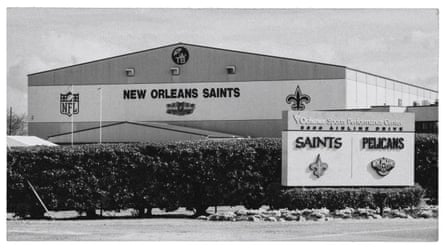
After Bensel submitted it in her name, Benson’s letter to the editor appeared in the Advocate. Part of the letter addressed the local church’s work combating sex trafficking and advocating for children’s online safety, about five years before state police began investigating allegations that the archdiocese had allegedly sexually trafficked minors.
“Many issues in our society are very difficult to talk about, such as pornography, online safety for children, drug abuse and sex trafficking,” the letter said. It also asserted that “the local Catholic Church is addressing these issues head-on”.
The Saints’ statement on Saturday said that the letter was not “misleading” and did not excuse “the misconduct of members of the clergy”.
Soon thereafter, for an Advocate story on the first anniversary of Tom Benson’s death, Bensel, McDonald and Aymond exchanged emails about the archbishop providing a statement praising Gayle’s support of the church in the first year of her Saints and Pelicans ownership. Gayle Benson and Bensel were given the chance to review and approve the statement, which read: “Mrs Benson is a woman of deep faith, and she puts her faith into action.”

Bensel, Benson, Lauscha, McDonald and Aymond all then communicated about an article that the Times-Picayune – which would be acquired by the Advocate weeks later – was preparing for Easter chronicling the early aftermath of the clergy-abuse list’s release. Benson had been asked for comment about how she perceived Aymond to have navigated that period. She gave Bensel permission to draft her statement – but to call Aymond “for his approval” prior to releasing it.
Bensel then prepared a quote, sent it to McDonald, copied Aymond and said: “This is what we plan to send once we know you guys are good with this.”
The published quote from Benson that Aymond signed off on read: “My personal relationship with the archbishop aside, I believe he has shown tremendous leadership and guidance through this very tough time. In my opinion, he has dealt with this very sad issue head on, with great resolve and determination to do the right thing and to do it as fully transparent as he is allowed.”
Bensel then emailed Benson, Lauscha and Aymond a link to that Times-Picayune article once it was published. “Thank you, Greg,” Benson wrote back to Bensel.
As late as June 2019, Bensel was still helping the archdiocese with its crisis communications, preparing Aymond for an interview with the Advocate about the effect of the clergy-abuse scandal in general on church finances. “I don’t get paid enough – Helping the Archbishop prep for his 9 am meeting,” he wrote in an email to his ex-wife, after Aymond copied him on to a chain of communications about the upcoming interview.
A subpoena would put an end to the Saints and the church’s email correspondence about a month later.
‘We are proud’
The Saints and archdiocese’s decision to coordinate their messaging created a headache for the organizations after it became clear that Aymond’s list had raised more questions than it answered. Numerous clergy molestation survivors came forward complaining that their abusers were omitted from the list, even in cases in which the church said it believed their allegations and had paid them substantial financial settlements.
The list did not provide the number of accusations against each clergyman or say exactly when they worked at the local churches to which they were assigned. That concerned the clergy-abuse survivor community, who worried the paucity of information might be an impediment for unreported victims contemplating coming forward.
It also concerned Cannizzaro’s top assistant district attorney, Graymond Martin, who responded to receiving the list by drafting a request on 8 November 2018 for more information, including basics such as any details indicating “where the alleged acts occurred, … when each act … occurred and some description of each of the alleged acts”.
Martin sent that draft to a subordinate. But it is unclear whether the request was formally sent to the archdiocese.
In his radio interview with Normand, Aymond emphasized that the archdiocese would be reporting complaints against living clergy to law enforcement. Bensel’s email indicated he consulted with Martin’s boss, Cannizzaro, about the list before its release. But Martin’s email noted that the DA’s office still had not received “copies of any documentation … of these complaints and the results of any inquiry conducted by the Archdiocese”.
Cannizzaro filed charges of child rape against one person on the list: George Brignac, in connection with the allegations at the center of the $550,000 settlement paid to one of his victims in July 2018. But Brignac, 85, died in 2020 while awaiting trial on charges that dated back to the late 1970s and early 1980s, sparing the church a courtroom spectacle.
The church did not catch the same break nearly five years later, after Cannizzaro’s successor as DA, Jason Williams, intervened in civil lawsuits and subpoenaed secret documents from the archdiocese to pursue child rape charges against a local priest named Lawrence Hecker.
Hecker’s name had not been disclosed until the list came out, even though he had been removed from ministry in 2002 because he was a suspected abuser. A survivor then accused Hecker of raping him when he was an underage Catholic high school student in 1975 – a crime that until then had not been disclosed to authorities and had no deadline before which prosecutors had to file charges.
The prosecution of Hecker kicked into high gear in the summer of 2023, when the Guardian and WWL Louisiana began publishing a series of reports on a written confession from the priest to his church superiors in 1999 that he had sexually molested or harassed several children during his career. The outlets also got Hecker to confess to being a serial child molester on camera and showed how the church took steps to deliberately hide the extent of his abusive history for decades beforehand.
Ultimately, Williams’ office charged Hecker with the former student’s 1975 assault. He pleaded guilty in December of last year at age 93 to child rape and other crimes, and he died in prison less than a week after receiving a mandatory life sentence.
Meanwhile, evidence turned up by Hecker’s prosecution prompted the state police investigator who built the case against him to swear under oath that he had probable cause to suspect the archdiocese ran a child sex-trafficking ring responsible for the “widespread … abuse of minors dating back decades”. That abuse was concealed from authorities beyond just Hecker’s case, and an investigation into the matter that could generate criminal charges against the clerical molesters’ protectors was ongoing, the sworn statement said.
Though Hecker and Brignac were on the initial version of the list, it eventually grew from 57 names to about 80.
A number of the additions came only after news media reported on conspicuous omissions, including two – Robert Cooper and Brian Highfill – added after WWL Louisiana and an Advocate reporter now at the Guardian questioned the archdiocese about them. Two other additions involved clergymen who also pleaded guilty – albeit in suburban New Orleans communities – to sexually molesting children, either before or after their ordination.
The deluge of claims eventually drove the archdiocese to file for bankruptcy protection in the spring of 2020.
That proceeding – which remained ongoing as of the publication of this report – led to more than 500 abuse claims against more than 300 clergymen, religious brothers and sisters, and lay staffers. The archdiocese does not consider most of those as being credibly accused, saying it only has the authority to include clergymen – priests and deacons – on its sanctioned list. And it could cost the archdiocese hundreds of millions of dollars in payments to clergy-abuse victims to settle the bankruptcy, if the church even manages to do so successfully.
Saturday’s statement from the Saints’ lawyer said Benson would not donate money to the archdiocese for it to settle with clergy molestation survivors.
“That abuse occurred is a terrible fact,” the statement continued. “As a member of the Catholic faith, Mrs Benson will continue to support the church and the great things it does. Her support is unwavering, but she has no intention of donating funds to the archdiocese to pay for settlements with abuse victims, and she has not done so.”
As all the disparate cases leading to the church bankruptcy made spectacular headlines, the Saints emails remained hidden for years. And the reasons for that are complex.
The communications had been produced as evidence in an unresolved civil lawsuit involving allegations against Brignac – the deacon who had been charged with sex crimes multiple times since the 1970s but had been reading at masses as recently as the summer of 2018.
In July 2019, the attorneys for that pending lawsuit’s plaintiff – who have also represented victims of Hecker – raised eyebrows by issuing a subpoena for copies of all communications among Saints and archdiocesan officials. The attorneys wrote in an accompanying court filing that the subpoena was necessary because the case’s discovery process turned up emails as well as other evidence establishing that Bensel was advising the archdiocese on how to navigate its clergy-abuse crisis.
News media outlets almost immediately began trying to access and report on the emails. Bensel was not pleased with their interest. Beside asking Lauscha over email to call his cellphone, he told an Advocate reporter seeking comment on the subpoena to instead ask his newspaper’s owner, John Georges. Bensel then said his organization had nothing to say on the subpoena, echoing an email to him from Lauscha which read: “As with any legal matter, we have no comment.”
The last of the “Saints emails” shows that Bensel forwarded the reporter’s request for comment to Georges. There is no indication in the emails that Georges responded.
In short order, WWL Louisiana, the now-combined Times-Picayune/Advocate newspaper and two other local television stations joined the Associated Press in suing for access to the emails. The media argued that the missives were a matter of public interest. Attorneys for the Saints argued that its correspondence with the church should remain private – while also maintaining that they had merely provided public relations advice to the archdiocese and had done nothing to be ashamed of.
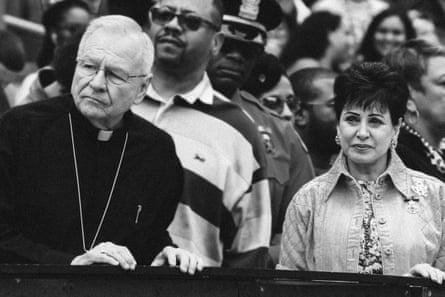
They explicitly denied having had “a hand in determining which names should or should not have been included on the pedophile list”, as the attorneys who obtained the subpoena put it.
“We are proud of the role we played and yes, in hindsight, we would help again to assist the archdiocese in its ability to publish the list with the hope of taking this step to heal the community,” Benson wrote in a statement. “I want to be clear … that I am not going to be deterred in helping people in need, whether a friend seeking advice or a stranger in need, it does not matter, our list is long.”
In what seemed to be directed at news organizations whose businesses depend to some extent on credentialed access to – or advertising and broadcasting rights from – the Saints and Pelicans, the statement also said: “I hope that is not lost on the same people that write such articles when they too come asking for help or support.”
On Saturday, the Saints’ statement said Benson was “proud of her executive team and supports them”.
“While the public relations assistance offered to the archdiocese has come under scrutiny, Mrs Benson and her team remain steadfast in bringing our community together and continuing to help the good people of our community,” the Saints’ statement said.
Nonetheless, the New Orleans archdiocese opted to move on from relying on Bensel after the July 2019 subpoena. It later retained a crisis communications consultant from a local firm at a cost of $10,000 monthly, public court filings have shown.
The media’s efforts to secure the Saints emails hit a significant snag when the Covid-19 pandemic shut down the local court system beginning in March 2020.
Then, on 1 May 2020, the archdiocese filed for bankruptcy. The move automatically and indefinitely halted litigation pending against the archdiocese.
The state court judge overseeing the case that produced the Saints emails never determined whether or not the emails were confidential.
As part of the bankruptcy proceedings, there were confidentiality orders applied to various archdiocesan documents. One of the primary justifications for such orders was to protect the identities of clergy-abuse victims.
In the correspondence between the Saints and the church that the Guardian and WWL Louisiana reviewed, no clergy-abuse victims are identified.
Nonetheless, the Saints lawyer’s statement on Saturday alleged that the emails were “leaked to the press in violation of a court order”. The statement also complained that the team was confronted with those communications as New Orleans prepared to host the Super Bowl showdown between the Kansas City Chiefs and the Philadelphia Eagles on 9 February.
“The team and the entire city are committed to hosting the greatest Super Bowl week and game ever,” the team’s statement said.
Ultimately, journalists managed to obtain and expose the emails.
One of those journalists was the first to expose Brignac before joining the Associated Press. Another investigated the Saints’ connection to Aymond in Sports Illustrated before joining the New York Times. And two contributed significantly to efforts to bring Hecker to justice at WWL Louisiana and the Guardian.

 3 months ago
59
3 months ago
59
